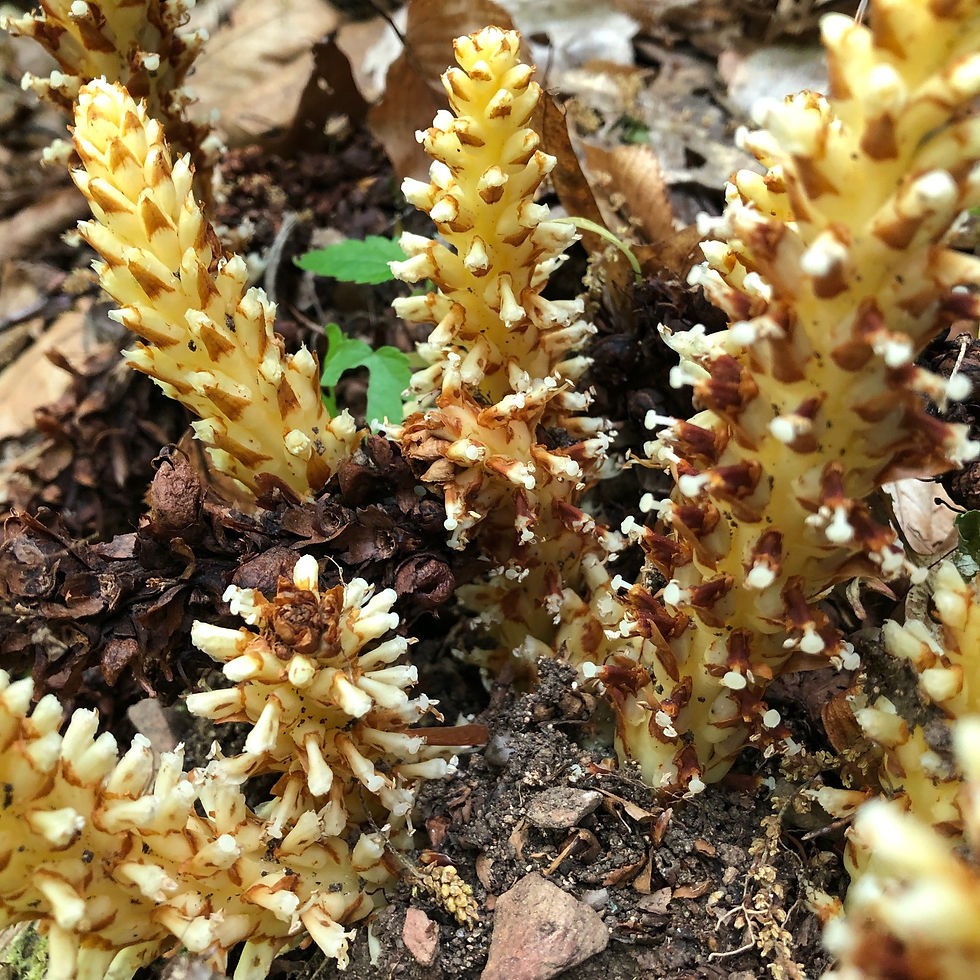What in the world is Bear Corn?
- Kimberly Hainge
- May 16, 2023
- 3 min read
A strange looking living thing emerges from the soil around the bases of oak trees in the spring. It is a member of the Broomrake family and is so odd-looking that those unfamiliar with it don’t know whether it is a plant or some sort of weird mushroom. This plant doesn’t look or behave like an average plant.

American squaw-root, Cancer Root or Bear Corn (Conopholis americana) is a parasitic plant that derives its nutrients solely from the roots of oaks (Quercus). American squaw-root only grows in the presence of oaks and does none of its own photosynthesis. Many plants include the name “Squaw” as part of their common names. The use of the word originally meant that Native Americans collected and used the plant, but the term Squaw has now fallen out of favor and been replaced by other common names. I learned to call this odd plant “Bear corn” when I was first introduced to it.

The life cycle of the Cancer-Root is unusual. Its seeds sink into the ground, near the base of a tree in the red oak family. Where most other plants send up leaves to collect sunlight and produce chlorophyll, this plant seed sends roots down into the soil until they come into contact with the tiny roots of the oak tree. They reach out and connect. The tiny roots (haustoria) gather all its nutrients from the oak tree for up to four years! It feeds off the oak tree as a parasite.
Usually in the spring of the fourth year, thick white stalks covered in brown scales push up from the soil in a cluster. A single stalk can reach a foot in height. The new stalks can usually be noticed in late April and May beneath oak trees in the Joyce Kilmer Memorial Forest. If you get down close and take pictures of the stalk you will see it change throughout the summer. The brown scales pull back and fall off to reveal tubular white flowers. Those flowers attract flies and bees, which can be seen swarming around
the perfectly shaped flowers and the insects do an excellent job of pollinating them. Once pollinated, the flowers produce round white seed. At this point the plant does look somewhat like an ear of corn, thus the name Bear Corn. Each seed or kernel falls to the ground to begin the process again. The parent bear cone will survive as a perennial for as many as six more years.

Bear Corn has been used as an astringent medicinally for centuries. It was traditionally used to treat symptoms of menopause and to treat bleeding both inside the intestines and uterus and wounds outside of the body. Although the plant is also called Cancer-Root there is no scientific evidence that it has any effect on any kind of cancer. A tea was traditionally made from the stalk of the plant.

Does this tasty parasite endanger the oaks? According to research, it does not. They are just too small compared to the giant size of the adult oak tree. Plus, Bear Corn provides a large portion of the food the black bear eats in the Smokies. Technically, the bears like to chomp down on the seeds, although they pull up the entire stalk when foraging. It seems odd that this plant would be so important to the bear, but research indicates that they are, indeed, very important.
References pulled from: https://www.gardeningknowhow.com/ornamental/flowers/squawroot-flower/bear-cone-plant-info.htm





Comments